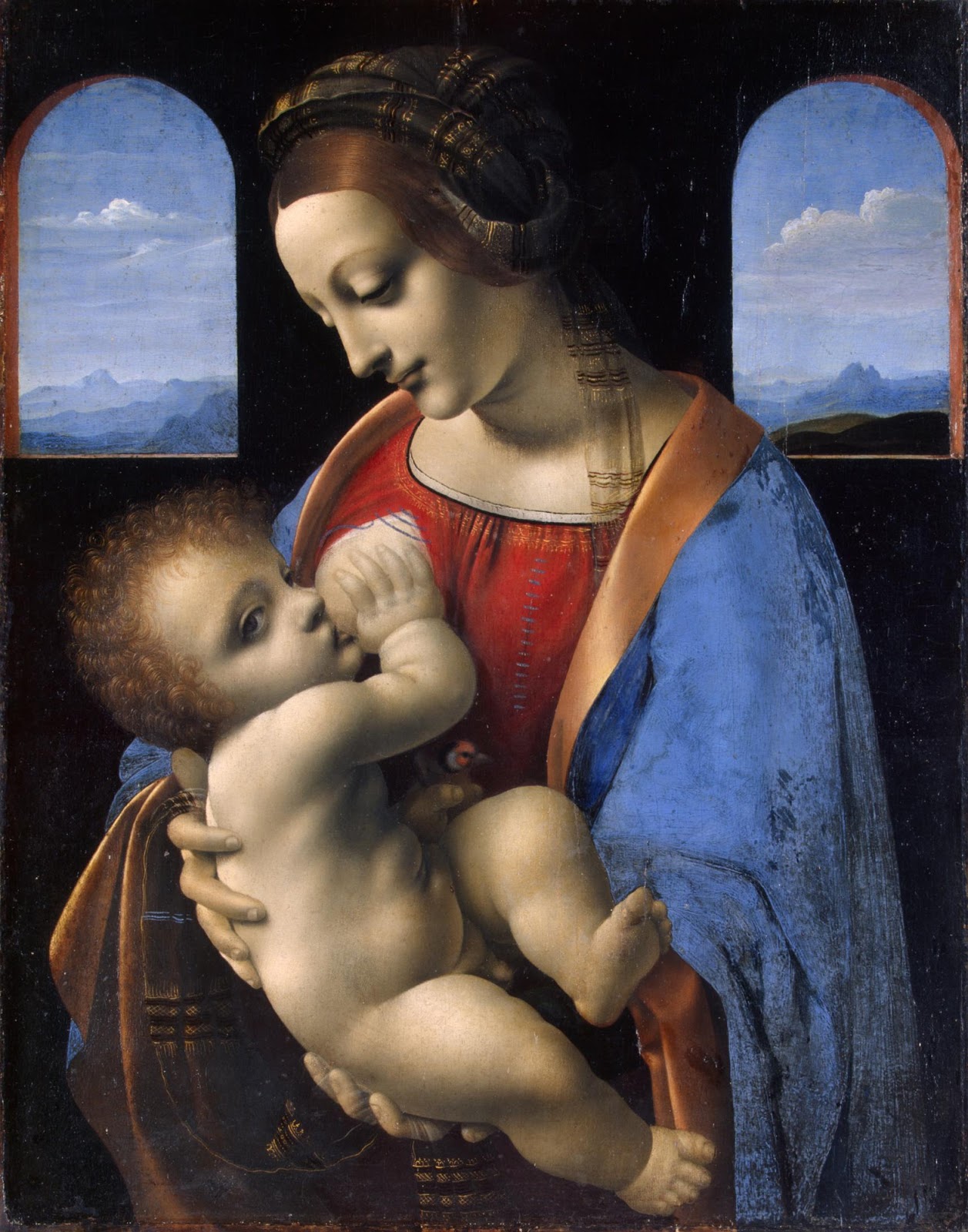Copying was an essential part of any 19th century artist’s education and the Musée du Louvre - unlike most academies and ateliers - was open to both men and women who studied its many masterpieces.
Louis Béroud was a regular copyist at the Louvre; indeed, in August 1911, it was Béroud who alerted authorities that
Leonardo da Vinci’s Mona Lisa was missing (
the painting, stolen by Vincenzo Peruggia, was returned two years later).
Béroud so relished the practice of copying works in the museum's collection, that he made at least twenty-six compositions of the subject.
Here, a woman in blue paints at an easel positioned in front of Leonardo’s monumental painting of the so-called Virgin of the Rocks.
Sitting on a stool with a protective tarp beneath her, she raises her right arm, touching her paintbrush to the surface of the canvas, her left hand resting on her hip, and a ready rag spills out of the box of supplies open on a stool to her left.
Almost all of the copyists in Béroud’s scenes are women who enjoyed access to the museum as amateur painters. | © Sotheby's
Louis Béroud | An elegantly dressed copyist at the Louvre, 1898 | Sotheby's








